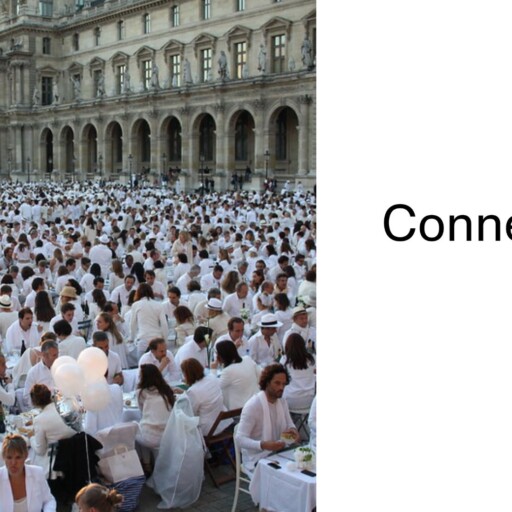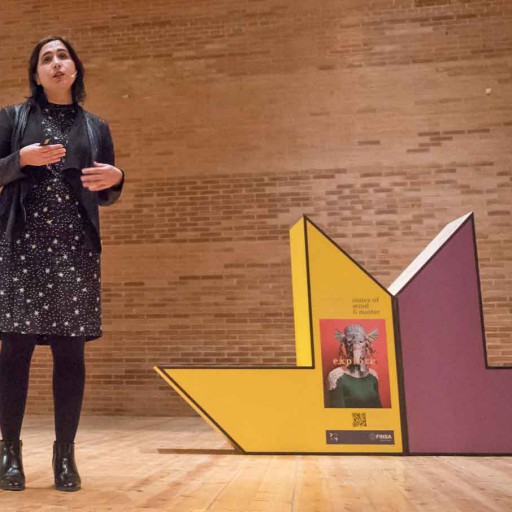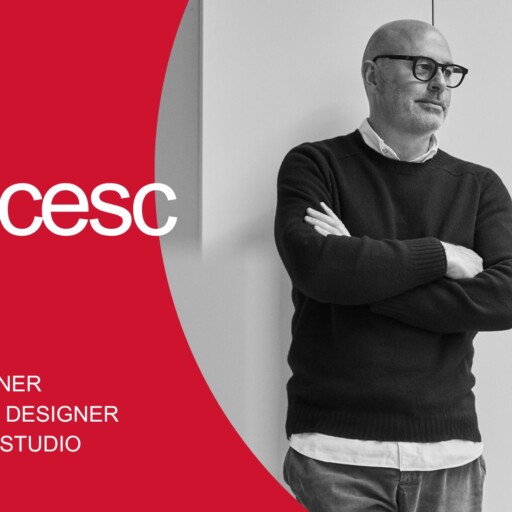Orgatec 2024 was held, as every two years, in Cologne to offer solutions for the interior design of new workspaces. Part of the Connections by Finsa team was there to share our impressions on three macro trends and a CMF (colors, materials, and finishes) analysis applied to office design.
More welcoming workspaces
It is confirmed that the office is a place for meeting, connection, and gathering, rather than individual work. Positive experiences within the workplace are enhanced, seen almost as an extension of the home, blurring the lines between teleworking and in-person work, as we showed in these case studies.
Socialization has undoubtedly gained great importance, but without forgetting environments conducive to the development of tasks that require concentration. As we mentioned in this post, we have not stopped seeing office cabins or pods.
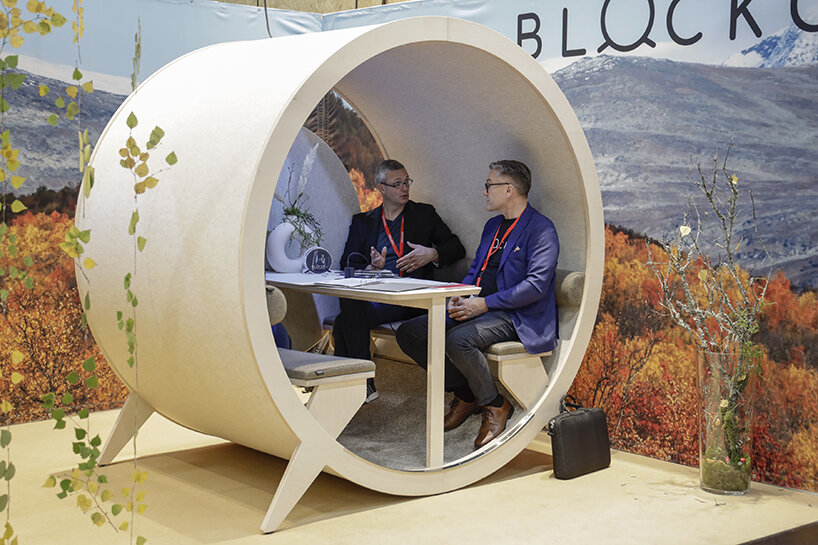
The fluid office
The design of the workplace has shifted from rigidity to fluidity. Operational furniture disappears in favor of ultralight and highly flexible solutions, supported by metal structures or textile dividing curtains that allow for the most appropriate environment for each activity (activity-based working).
Agoras and small auditoriums with bleachers enable cooperation dynamics in an agile and easily configurable environment. Here we explained which materials are most suitable for their equipment.
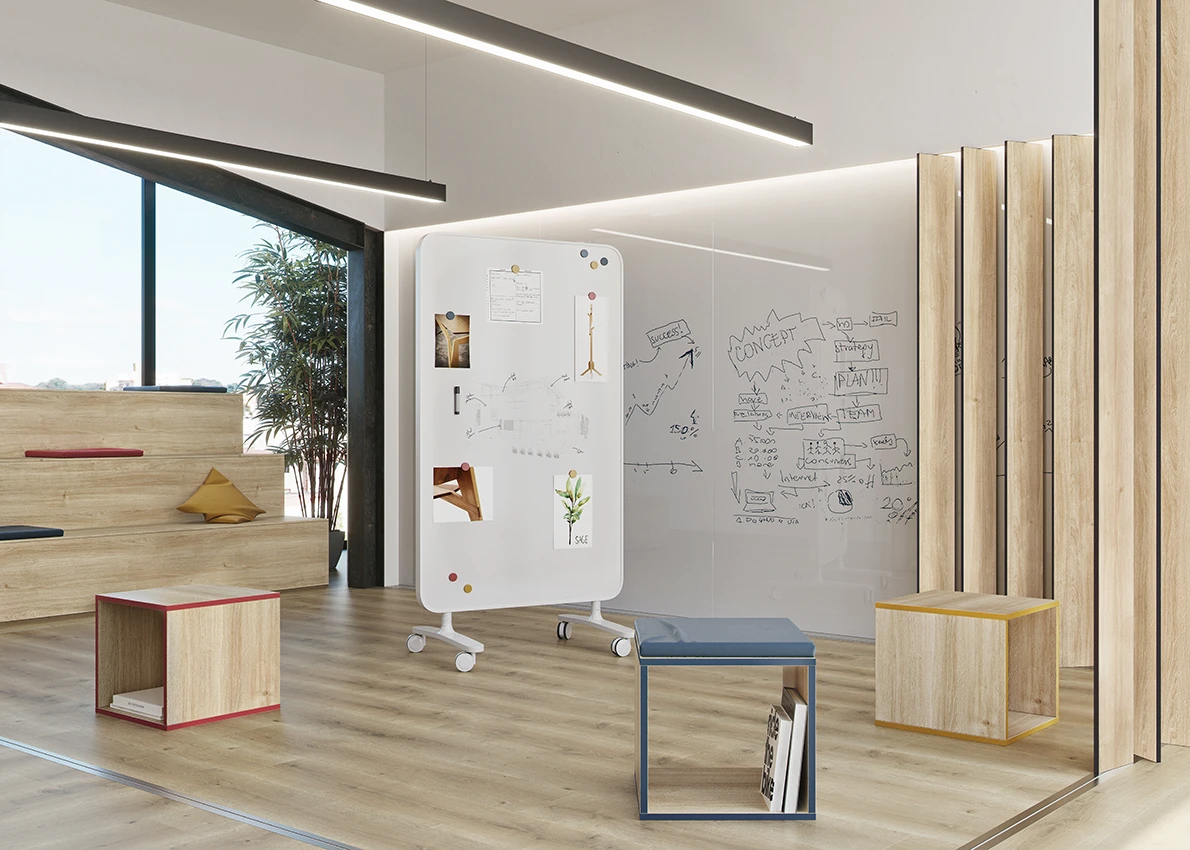
Promoting health and well-being in the office
If we want to create points of attraction for talent, we must configure them to enhance people’s comfort. For this reason, we see more and more soft seating, where one can relax and have casual conversations, or the introduction of plants or art as activators of creativity and a certain spirituality and transcendence. Technology also plays a prominent role as a facilitator of comfort, such as through smart lockers.
Accessibility is another relevant point in this section, as we have seen specific designs to facilitate the movement and performance of people with functional diversity, whether in terms of mobility, acoustics, or vision.
Of course, sustainability also encompasses this area, and there were several examples shown at Orgatec 2024 of recycling separation bins.
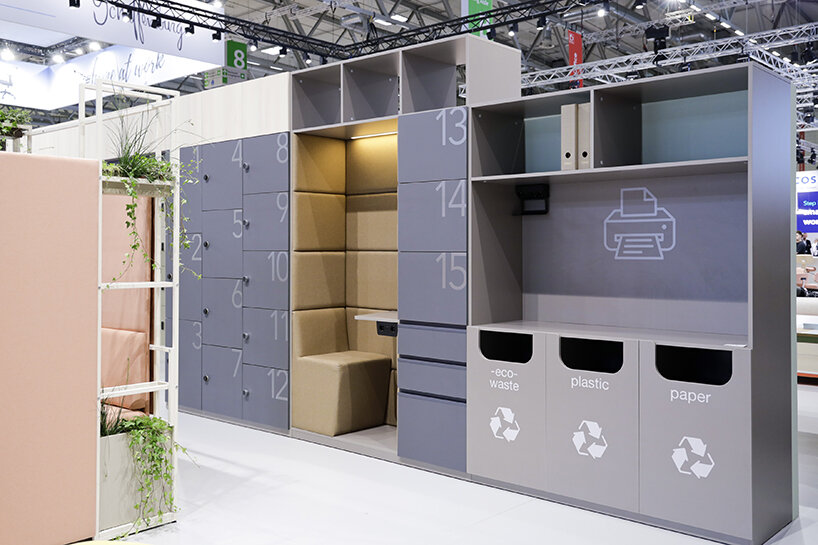
CMF: Color, Materials, and Finishes in the Office
Colors in the office: Away with seriousness
Color has arrived in workspaces in a bold way. It is applied as a block, either tone-on-tone, with color contrasts – yellows with reddish and orange hues, reddish with blues, or pinks with greens – or through a monochromatic approach.
Blue is the emerging tone, and we can find it in dark, light, grayish, electric blue, or cobalt shades. But there is much more in this chromatic explosion: greens like this, olive green or more serene like this sage or this clay green; reddish tones like this dark one, this clay red, or this tile version; talcum pink, mandarin, yellow… A true palette that reflects the sunset. And, of course, warm neutrals were also exhibited to counterbalance, like this talcum ivory or this light gray.
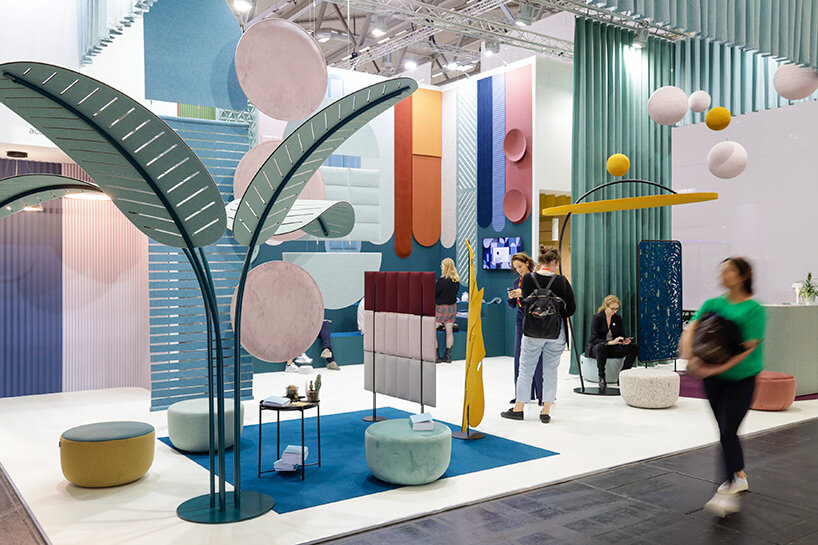
Materials for designing offices: Textiles and sustainability
The commitment is strong towards post-consumer recycled materials, bio-based products, and generally durable and timeless solutions. We have also seen extensive use of textiles, especially through curtains, which, as we have mentioned, serve as dividing elements.
Woods are still on the rise, particularly oaks or walnuts, both in decorative surfaces and veneer. We also highlight colored lacquered wood, with visible grain, creating a washed effect in different varieties like ash or birch.
Finally, we have seen metals such as recycled aluminum, some applications of leather for zoning, and very minimal use of stones and marbles in common areas and auxiliary tables.
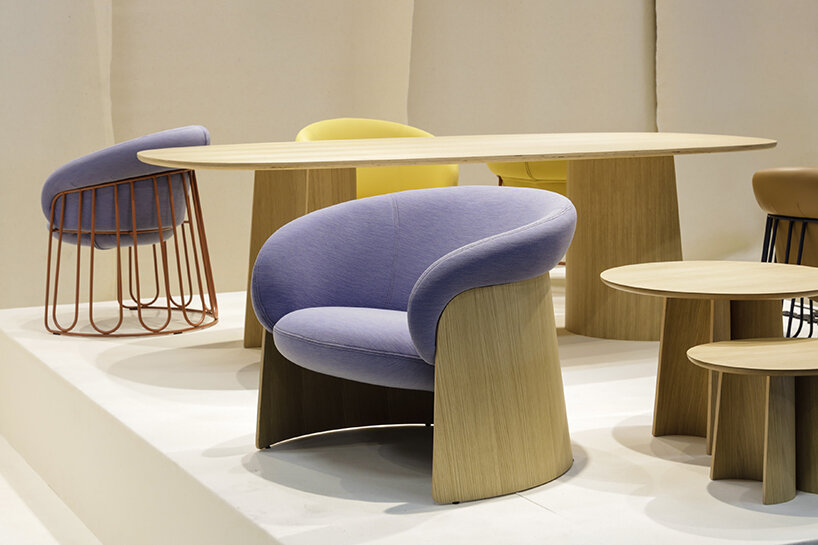
Finishes for workspaces: Softness
The finishes are dominated by a silky touch and anti-fingerprint qualities. The grooved and textured finishes were the big absence, although some slatted elements used as acoustic features have been maintained.


